Ви повинні увійти в систему
-
WróćX
-
компоненти
-
-
Category
-
Напівпровідники
- Діоди
- Тиристори
-
Електро-ізольовані модулі
- Електроізольовані модулі | ВІШАЙ (ІЧ)
- Електроізольовані модулі | INFINEON (EUPEC)
- Електроізольовані модулі | Семікрон
- Електроізольовані модулі | POWEREX
- Електроізольовані модулі | IXYS
- Електроізольовані модулі | ПОСЕЙКО
- Електроізольовані модулі | ABB
- Електроізольовані модулі | ТЕХСЕМ
- Przejdź do podkategorii
- Випрямні мости
-
Транзистори
- Транзистори | GeneSiC
- Модулі SiC MOSFET | Mitsubishi
- Модулі SiC MOSFET | STARPOWER
- Модулі ABB SiC MOSFET
- Модулі IGBT | MITSUBISHI
- Транзисторні модулі | MITSUBISHI
- Модулі MOSFET | MITSUBISHI
- Транзисторні модулі | ABB
- Модулі IGBT | POWEREX
- Модулі IGBT | INFINEON (EUPEC)
- Напівпровідникові елементи з карбіду кремнію (SiC)
- Przejdź do podkategorii
- Драйвери
- Блоки потужності
- Przejdź do podkategorii
- Електричні перетворювачі
-
Пасивні компоненти (конденсатори, резистори, запобіжники, фільтри)
- Резистори
-
Запобіжники
- Мініатюрні запобіжники для електронних плат серії ABC і AGC
- Швидкі трубчасті запобіжники
- Повільні запобіжники з характеристиками GL / GG і AM
- Ультрашвидкі плавкі запобіжники
- Швидкі запобіжники: британський та американський стандарт
- Швидкі запобіжники. Європейський стандарт
- Тягові запобіжники
- Високовольтні запобіжні
- Przejdź do podkategorii
-
Конденсатори
- Конденсатори для електродвигунів
- Електролітичні конденсатори
- Снабберні конденсатори
- Конденсатори потужності
- Конденсатори для DC ланцюгів
- Конденсатори для компенсації пасивної потужності
- Високовольтні конденсатори
- Конденсатори великої потужності для індукційного нагріву
- Конденсатори для зберігання імпульсів та енергії
- Конденсатори DC LINK
- Конденсатори для ланцюгів змінного / постійного струму
- Przejdź do podkategorii
- EMI фільтри
- Іоністори (супер-конденсатори)
- Захист від стрибків напруги
- Фільтри виявлення випромінювання TEMPEST
- Розрядник
- Przejdź do podkategorii
-
Реле та контактори
- Реле та контактори - теорія
- Напівпровідникові реле AC 3-фазні
- Напівпровідникові реле DC
- Контролери, системи управління та аксесуари
- Системи плавного пуску і реверсивні контактори
- Електромеханічні реле
- Контактори
- Оборотні перемикачі
-
Напівпровідникові реле AC 1-фазні
- РЕЛЕ AC 1-ФАЗНЫЕ СЕРИИ 1 D2425 | D2450
- Однофазное реле AC серии CWA и CWD
- Однофазное реле AC серии CMRA и CMRD
- Однофазное реле AC серии PS
- Реле AC двойное и четверное серии D24 D, TD24 Q, H12D48 D
- Однофазні твердотільні реле серії gn
- Однофазні напівпровідникові реле змінного струму, серія ckr
- Однофазні реле змінного струму ERDA та ERAA для DIN-рейки
- Однофазні реле змінного струму для струму 150А
- Подвійні твердотільні реле, інтегровані з радіатором для DIN-рейки
- Przejdź do podkategorii
- Напівпровідникові реле AC 1-фазні для друкованих плат
- Інтерфейсні реле
- Przejdź do podkategorii
- Індукційні компоненти
- Радіатори, варистори, термічний захист
- Вентилятори
- Кондиціонери, обладнання для шаф електричних, охолоджувачі
-
Батареї, зарядні пристрої, буферні блоки живлення та інвертори
- Батареї, зарядні пристрої - теоретичний опис
- Літій-іонні батареї. Спеціальні батареї. Система управління акумулятором (BMS)
- Батареї
- Зарядні пристрої та аксесуари
- Резервне джерело живлення ДБЖ та буферні джерела живлення
- Перетворювачі та аксесуари для фотоелектрики
- Зберігання енергії
- Паливні елементи
- Літій-іонні акумулятори
- Przejdź do podkategorii
-
Автоматика
- Підйомники Spiralift
- Запчастини для дронів Futaba
- Кінцеві вимикачі, Мікровимикачі
- Датчики Перетворювачі
- Пірометри
- Лічильники, Реле часу, Панельні вимірювальні прилади
- Промислові захисні пристрої
- Світлові і звукові сигнальні установки
- Термокамери, Тепловізори
- LED-екрани
- Керуюча апаратура
- Przejdź do podkategorii
-
Провід, літцендрат, гофровані рукави, гнучкі з'єднання
- Дроти
- Кабельні вводи та муфти
- Багатожильні дроти Lica
-
Кабелі і дроти для спеціальних застосувань
- Подовжувальні та компенсаційні дроти
- Дроти для термопар
- Приєднувальні дроти для датчиків PT
- Багатожильні дроти темп. -60C до +1400C
- Дроти середньої напруги
- Дроти запалювання
- Нагрівальні дроти
- Одножильні дроти темп. -60C до +450C
- Залізничні дроти
- Нагрівальні дроти для вибухонебезпечних зон
- Przejdź do podkategorii
- Оболонки
-
Плетені кабелі
- Плоскі плетені кабелі
- Круглі плетені кабелі
- Дуже гнучкі плетені кабелі - плоскі
- Дуже гнучкі плетені кабелі - круглі
- Мідні циліндричні плетені кабелі
- Мідні циліндричні плетені кабелі і кожуха
- Гнучкі заземлювальні стрічки
- Циліндричні плетені дроти з лудженої і нержавіючої сталі
- Мідні ізольовані плетені дроти PCV - температура до 85 градусів C
- Плоскі алюмінієві плетені дроти
- З'єднувальний набір - плетені дроти і трубки
- Przejdź do podkategorii
- Аксесуари для тяги
- Кабельні наконечники
- Ізольовані еластичні шини
- Багатошарові гнучкі шини
- Системи прокладки кабелю (PESZLE)
- Przejdź do podkategorii
- Zobacz wszystkie kategorie
-
Напівпровідники
-
-
- Постачальники
-
додатки
- Energy bank
- ІНДУКЦІЙНИЙ НАГРІВ
- Автоматизація HVAC
- Верстати з ЧПУ
- ВИМІРЮВАННЯ ТА РЕГУЛЮВАННЯ ТЕМПЕРАТУРИ
- Вимірювання та регулювання температури
- ГІРНИЧОДОБУВНА ПРОМИСЛОВІСТЬ, СТАЛЕЛИВАРНІ КОМБІНАТИ, ГЗК
- ДВИГУНИ І ТРАНСФОРМАТОРИ
- ЕНЕРГЕТИКА
- ЗВАРЮВАЛЬНІ АПАРАТИ
- КОМПЛЕКТУЮЧІ ДЛЯ РОЗПОДІЛЬНИХ, ТЕЛЕКОМУНІКАЦІЙНИХ ШАФ І ШАФ УПРАВЛІННЯ
- МАШИНИ ДЛЯ ДЕРЕВООБРОБКИ ТА СУШІННЯ ДЕРЕВИНИ
- ПОЛІГРАФІЯ
- ПРИВІД ПОСТІЙНОГО І ЗМІННОГО СТРУМУ
- ПРИЛАДИ ТА ОБЛАДНАННЯ ДЛЯ ВИБУХОНЕБЕЗПЕЧНИХ ЗОН (EX)
- ПРИСТРОЇ БЕЗПЕРЕБІЙНОГО ЖИВЛЕННЯ (UPS) І ВИПРЯМЛЯЧІ
- ПРОМИСЛОВІ ЗАСОБИ ЗАХИСТУ
- ПРОМИСЛОВА АВТОМАТИКА
- ТЕРМОФОРМОВОЧНІ МАШИНИ
- ТЯГОВИЙ ПРИВІД
-
монтаж
-
-
Індуктори
-
-
Індукційні прилади
-
-
Сервіс
-
- Контакт
- Zobacz wszystkie kategorie
12 найпоширеніших запитань про контактні кільця

12 Найчастіших Запитань про Ковзні Кільця
У цьому матеріалі ми розглянемо найчастіше поставлені запитання щодо ковзних кілець. Стаття містить 12 популярних запитань про ковзні та розділені кільця. Кожне запитання детально пояснене, а також наведені ілюстративні діаграми.
Питання 1: Чому ми використовуємо ковзні кільця в двигунах?
Ковзні кільця застосовуються в двигунах для введення опору в обмотки ротора. У цій системі використовуються три ковзні кільця, кожне з яких під’єднане до однієї з трьох частин обмотки ротора.
Введення опору в обмотки ротора забезпечує краще з’єднання струму ротора зі струмом статора. У результаті досягається великий крутний момент при відносно малому струмі. Коли двигун досягає робочої швидкості, пристрої замикаються, щітки перестають торкатися, і двигун починає працювати як стандартний асинхронний двигун змінного струму.
Питання 2: Яка різниця між ковзним кільцем і розділеним кільцем?
Основна різниця між цими двома елементами полягає в тому, що ковзне кільце використовується для передачі енергії від нерухомої частини до обертової, тоді як розділене кільце застосовується в пристроях постійного струму (DC) для зміни напрямку струму.
Ковзне кільце має конструкцію суцільного замкнутого кільця з щітками, що прилягають до його зовнішньої поверхні, тоді як розділене кільце розрізане навпіл, утворюючи дві половини.
Крім того, ковзні кільця використовуються в генераторах змінного струму (AC), а розділені кільця — у генераторах постійного струму (DC).
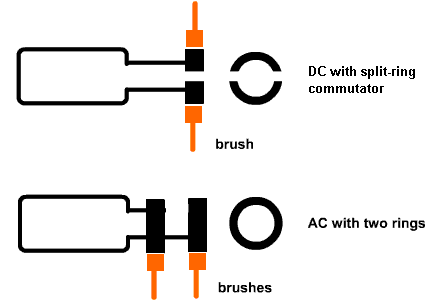
Питання 3: Для чого служать ковзні кільця в генераторах AC?
Генератори AC — це пристрої, що перетворюють механічну енергію на електричну відповідно до принципу електромагнітної індукції. Ковзні кільця використовуються для з’єднання обертової частини машини з зовнішніми колами. Коли в системі виникає змінний струм, він з’являється на ковзному кільці.
Питання 4: Чи однакові ковзні кільця та колектори?
І колектори, і ковзні кільця слугують для підтримання потоку електричного струму між нерухомими та обертовими частинами. Але основна різниця полягає в тому, що колектор перетворює змінний струм (AC) у постійний (DC) і навпаки, тоді як ковзне кільце цього не робить.
Ковзне кільце має одне завдання — підтримувати електричний зв’язок між нерухомою та обертовою частинами.
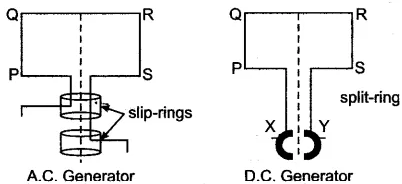
Питання 5: Яку роль виконує ковзне кільце?
Ковзне кільце забезпечує безперервне електричне з’єднання між нерухомою та обертовою частинами в обертовій електричній системі. Це дозволяє передавати сигнали або потужність від статичного джерела до рухомої частини.
На практиці це кільця, виготовлені з провідних матеріалів і встановлені на валах. Хоча вони ізольовані від валу, вони з’єднані з рухомою системою за допомогою мідних обмоток.
Питання 6: Яка мета використання ковзних кілець?
Ковзне кільце застосовується в рухомих електричних системах для забезпечення постійного з’єднання між нерухомою та обертовою частинами. Завдяки цьому джерело живлення може передавати електричний струм у рухому частину.
Ковзні кільця — це провідні смуги, закріплені на валах. Хоча вони ізольовані від валу, вони з’єднані з обертовою частиною через обмотки. Зовнішні поверхні кілець перебувають у постійному ковзному контакті зі щітками.
Питання 7: Яку функцію виконує ковзне кільце в генераторі?
Ковзні кільця — це електромеханічні пристрої, що дозволяють проводити струм і сигнали від нерухомої частини до обертової.
У генераторах вони використовуються для підтримання електричного контакту зі щітками. Ковзне кільце не змінює напрям струму — його зміну викликає обертання обмоток.
Кожна обмотка під’єднана до однієї щітки.
Питання 8: Яку роль виконує ковзне кільце в електричному генераторі?
Ковзне кільце в електричному генераторі служить для створення синусоїдального вихідного сигналу. У пристроях постійного струму застосовуються колектори, які підтримують потік струму в одному напрямку. У генераторах змінного струму (AC) ситуація інша.
Генератори змінного струму (AC) використовують ковзні кільця, які дозволяють напрузі та струму змінювати напрямок — від додатного до від’ємного значення, утворюючи синусоїдальну форму сигналу.
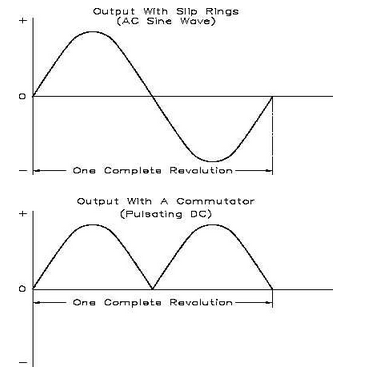
Питання 9: Яка різниця між колектором і ковзним кільцем?
Основна різниця між ковзним кільцем і колектором полягає в тому, що ковзне кільце використовується для передачі струму від нерухомої частини до обертової, тоді як колектор застосовується в генераторах постійного струму для зміни напрямку струму.
| Тип порівняння | Ковзне кільце | Колектор |
|---|---|---|
| Визначення | Використовується для передачі енергії від нерухомої частини до обертової в пристрої AC. | Використовується для зміни напрямку струму. |
| Застосування | Генератори змінного струму (AC) | Генератори постійного струму (DC) |
| Конструкція | Утворює суцільне, замкнуте кільце | Поділений на дві або більше частини |
| Приклад використання | Передає струм двигуну AC від пристрою AC | Передає імпульсний струм двигуну DC |
Питання 10: Скільки ковзних кілець має синхронний двигун?
Синхронні двигуни — це двигуни змінного струму (AC), у яких обертання вала синхронізоване з частотою живлення.
Такі двигуни мають окремо збуджувані поля. Якщо джерелом збудження є постійний струм (DC), двигун має два ковзні кільця.
Безщіткові двигуни не мають ковзних кілець, оскільки в них разом збудження обертаються й випрямлячі.
Питання 11: Що таке ковзне кільце в генераторі (альтернаторі)?
Ковзні кільця в генераторах (альтернаторах) служать для подачі постійного струму (DC) на ротор. У безщіткових конструкціях ковзні кільця не потрібні.
Постійний струм, створений генератором, є незмінним, тоді як ротор, до якого його потрібно підвести, обертається. Тому ковзні кільця встановлюють на клемах ротора, що обертається з тією ж швидкістю, що й вал.
Щітки, які передають постійний струм, підтримують постійний контакт з ковзними кільцями і передають напругу на обмотки ротора.
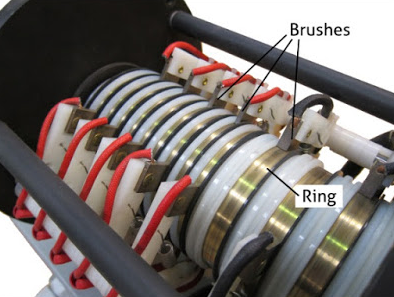
Питання 12: Чому в двигунах використовуються розділені кільця?
Щоб запобігти зміні крутного моменту на протилежний щоразу, коли котушка проходить через площину магнітного поля, застосовуються розділені кільця, які в цей момент змінюють напрямок струму.
У сучасних двигунах використовуються пружинні вугільні щітки замість мідних.
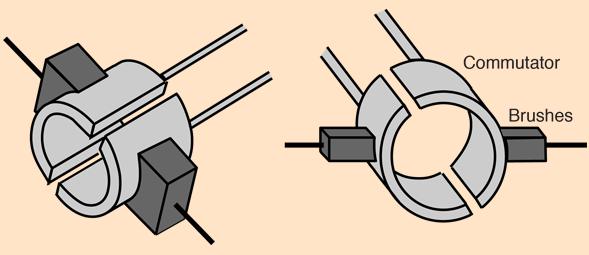
Підсумок
Ми впевнені, що після прочитання цієї статті ви дізналися основну інформацію про ковзні кільця та колектори, і їхні відмінності більше не будуть вас плутати.
Related products
Related posts
 Thermally conductive materials in power storages
Thermally conductive materials in power storages
 Measuring power and energy in electric circuits
Measuring power and energy in electric circuits
 Wentylatory przemysłowe - rodzaje, właściwości
Wentylatory przemysłowe - rodzaje, właściwości

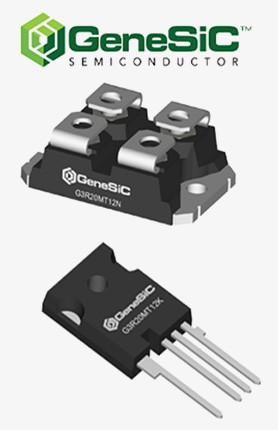
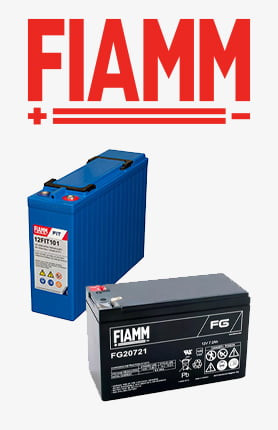
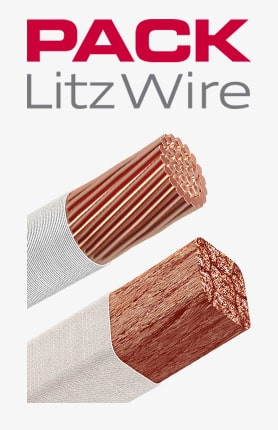
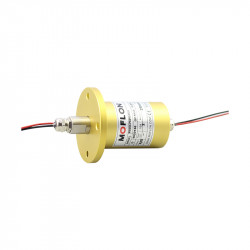
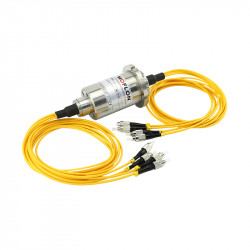
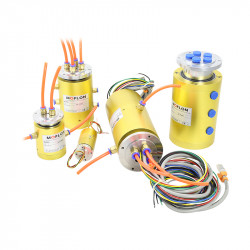
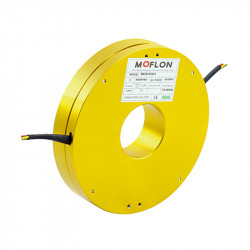
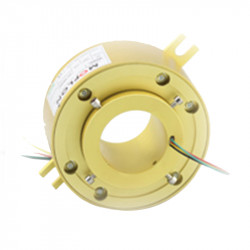
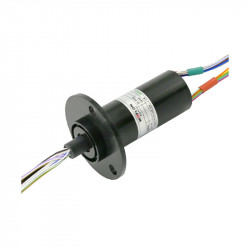
Leave a comment